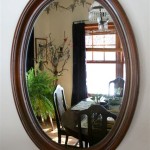How To Use Mirror Therapy for Stroke
After a stroke, regaining mobility and function in the affected limbs can be a challenging but crucial part of the recovery process. Mirror therapy has emerged as a promising therapeutic technique that can aid in this rehabilitation journey. Understanding the essential aspects of mirror therapy for stroke is paramount to maximizing its effectiveness.
Mirror therapy involves placing a mirror in the midline of the body, creating an illusion that the affected limb is moving even when it is not. This visual feedback tricks the brain into perceiving movement in the paralyzed limb, stimulating neural pathways and promoting neuroplasticity. Incorporating mirror therapy into a comprehensive stroke rehabilitation program can enhance motor recovery, reduce pain, and improve overall functionality.
1. Positioning and Setup: Proper positioning is vital for successful mirror therapy. The mirror should be placed vertically in front of the patient, with the affected limb positioned behind the mirror. The unaffected limb should be visible in the mirror, creating the illusion of bilateral movement.
2. Exercises: Mirror therapy exercises involve repetitive and goal-oriented movements. Patients are guided to perform symmetrical movements with both the affected and unaffected limbs, as if they were moving together. These exercises can include simple hand and arm movements, reaching, grasping, and other functional activities.
3. Duration and Frequency: Consistency is key with mirror therapy. Regular sessions of 20-30 minutes are рекомендуется at least three times a day. The duration and frequency can be gradually increased as the patient progresses.
4. Feedback and Progression: Monitoring and adjusting the therapy based on the patient's progress is essential. Therapists provide feedback on movement quality and encourage patients to challenge themselves with more complex exercises as they improve.
5. Motivation and Support: Stroke rehabilitation can be demanding, and motivation plays a crucial role. Therapists and family members can provide encouragement and support, helping patients stay engaged and motivated throughout the therapy process.
Mirror therapy is a safe and effective technique that can significantly enhance stroke rehabilitation outcomes. By understanding and implementing the essential aspects outlined above, clinicians and patients can harness the benefits of mirror therapy to promote motor recovery, reduce pain, and improve overall functionality after stroke.

Mirror Therapy For Stroke Patients How To Improve Mobility

Mirror Therapy For Stroke Rehabilitation A Viable Treatment Option Myotspot Com

The Effect Of Mirror Therapy On Functional Recovery Upper Extr

Mirror Therapy For Stroke Hemiplegia And Phantom Limb Pain Homeceuconnection

Saebo Mirror Box Therapy Arm And Hand Function

Stroke Exercises Using Mirror Therapy And Neurons

Mirror Therapy Exercises For Stroke Recovery

What Is Mirror Box Therapy Transitions Physiotherapy

Focusing On Visual Perception To Improve Motor Performance After Stroke Moss Rehabilitation Research Institute Mrri

Frontiers Alternative Motor Task Based Pattern Training With A Digital Mirror Therapy System Enhances Sensorimotor Signal Rhythms Post Stroke








